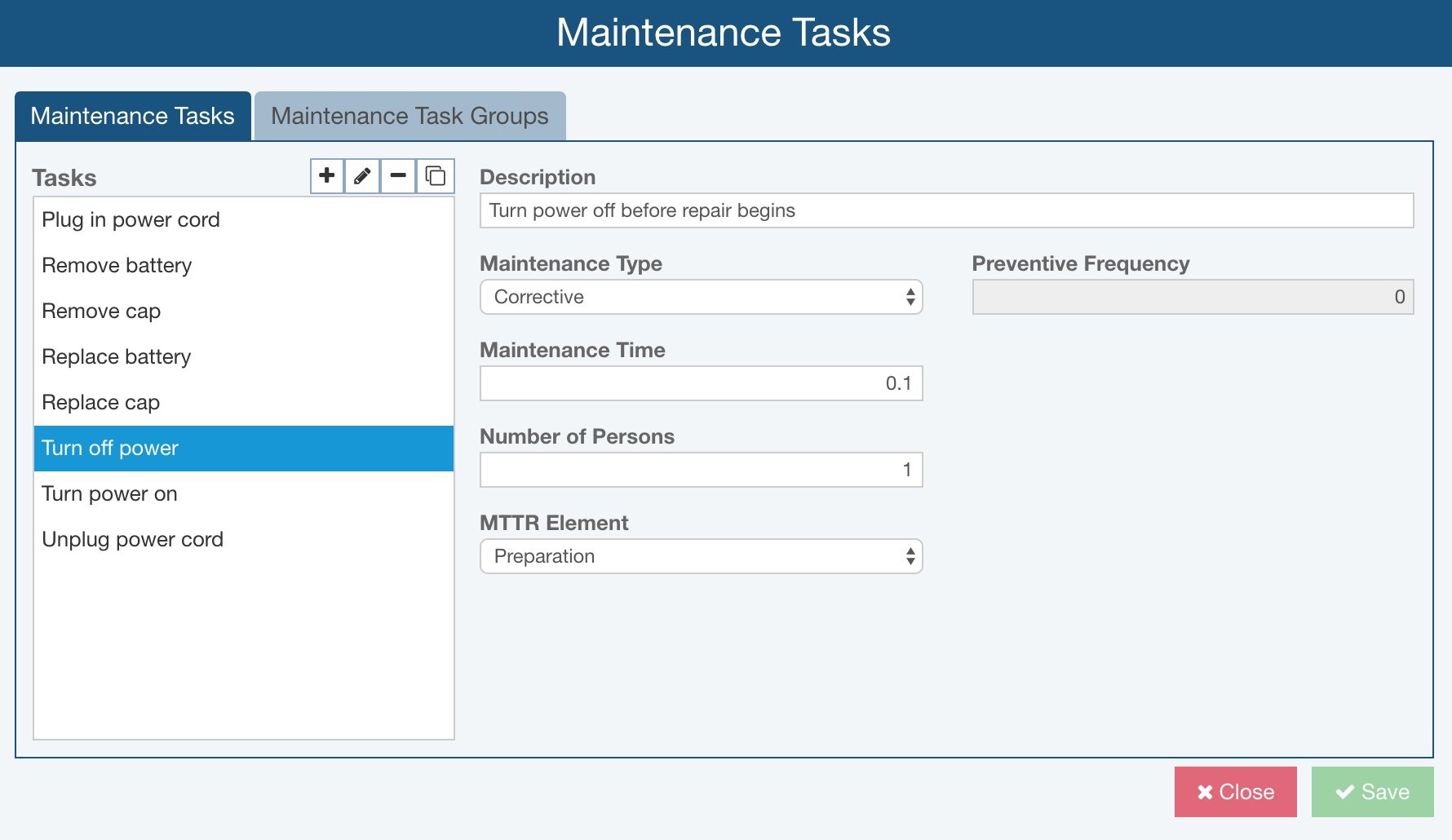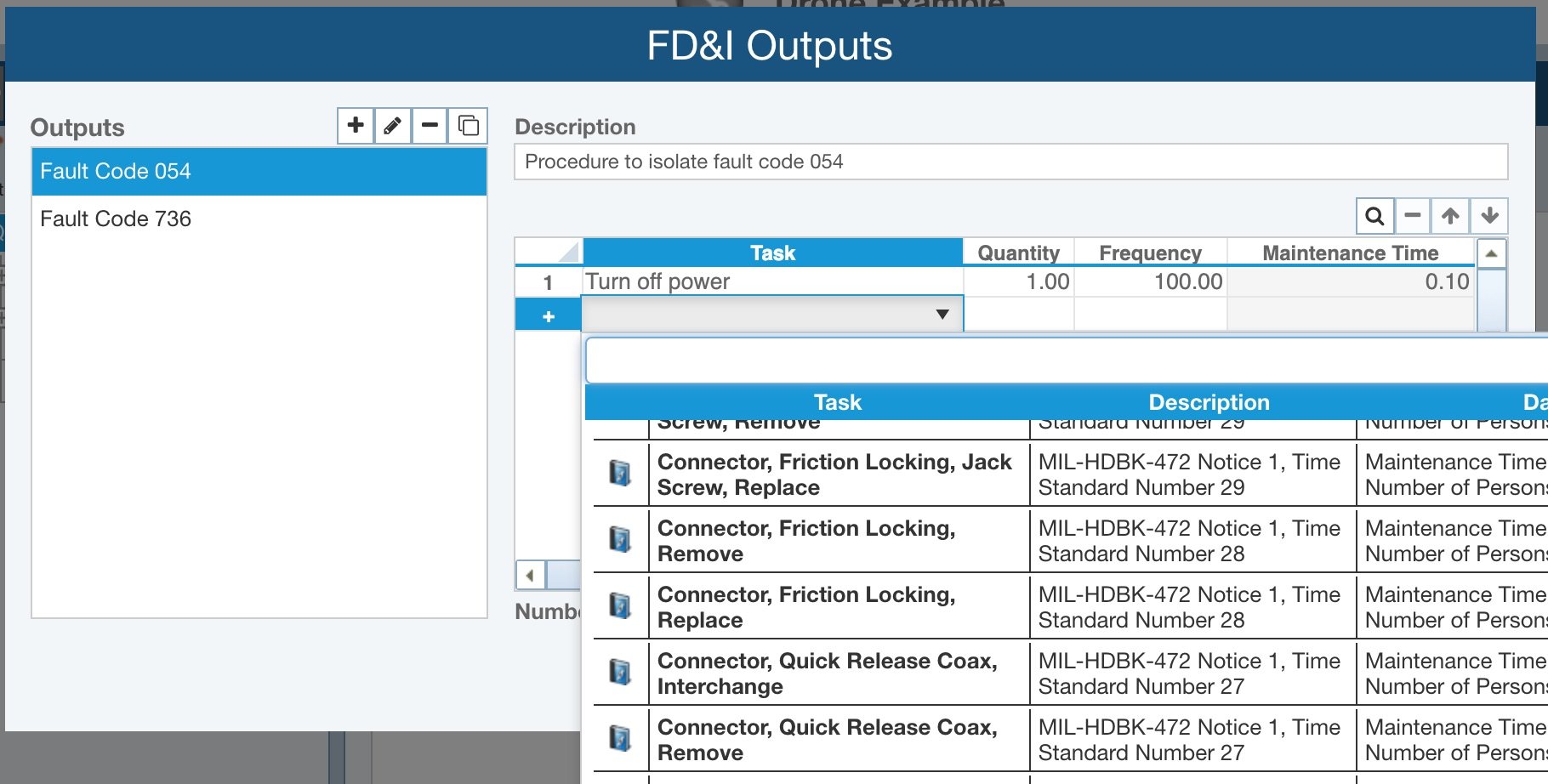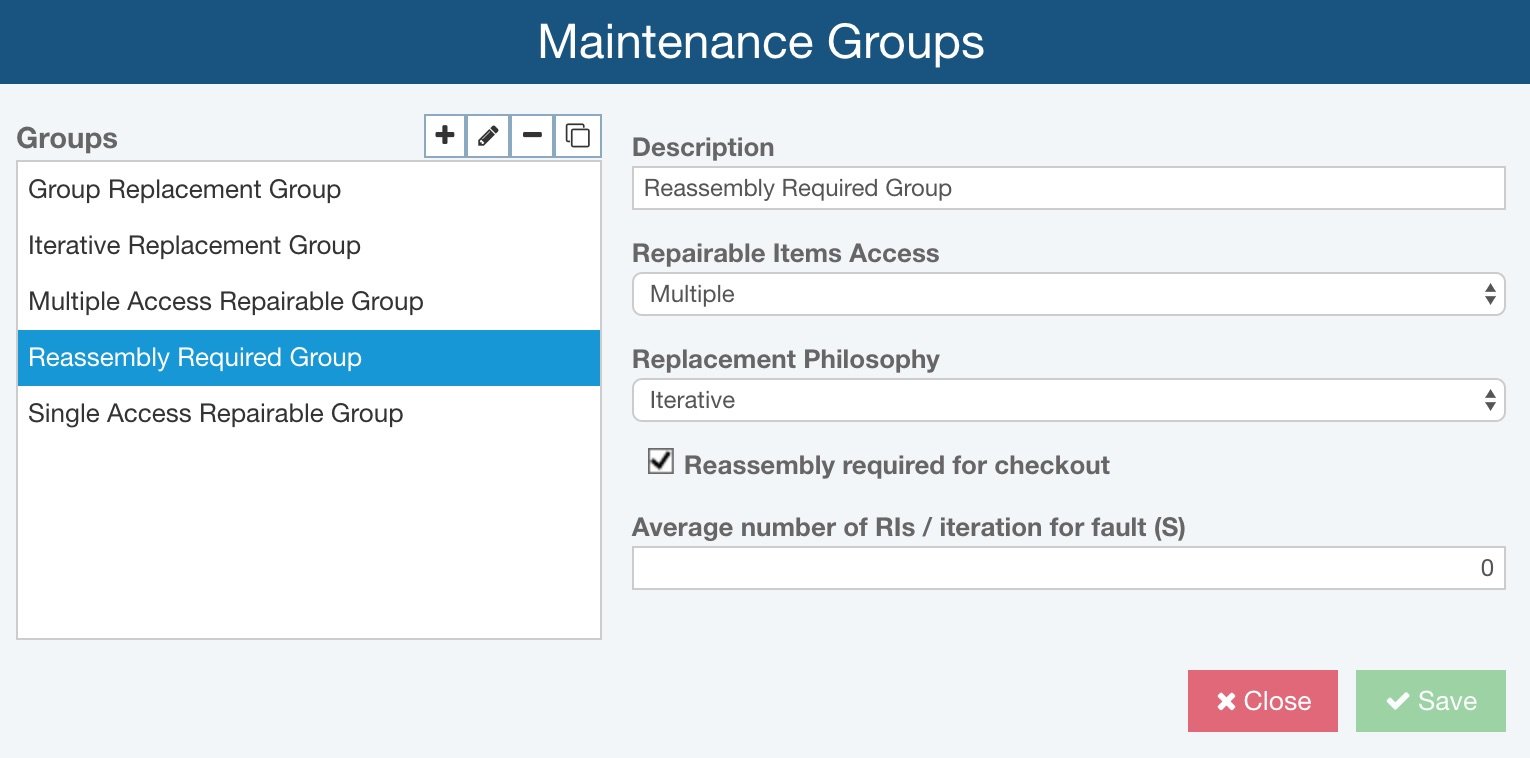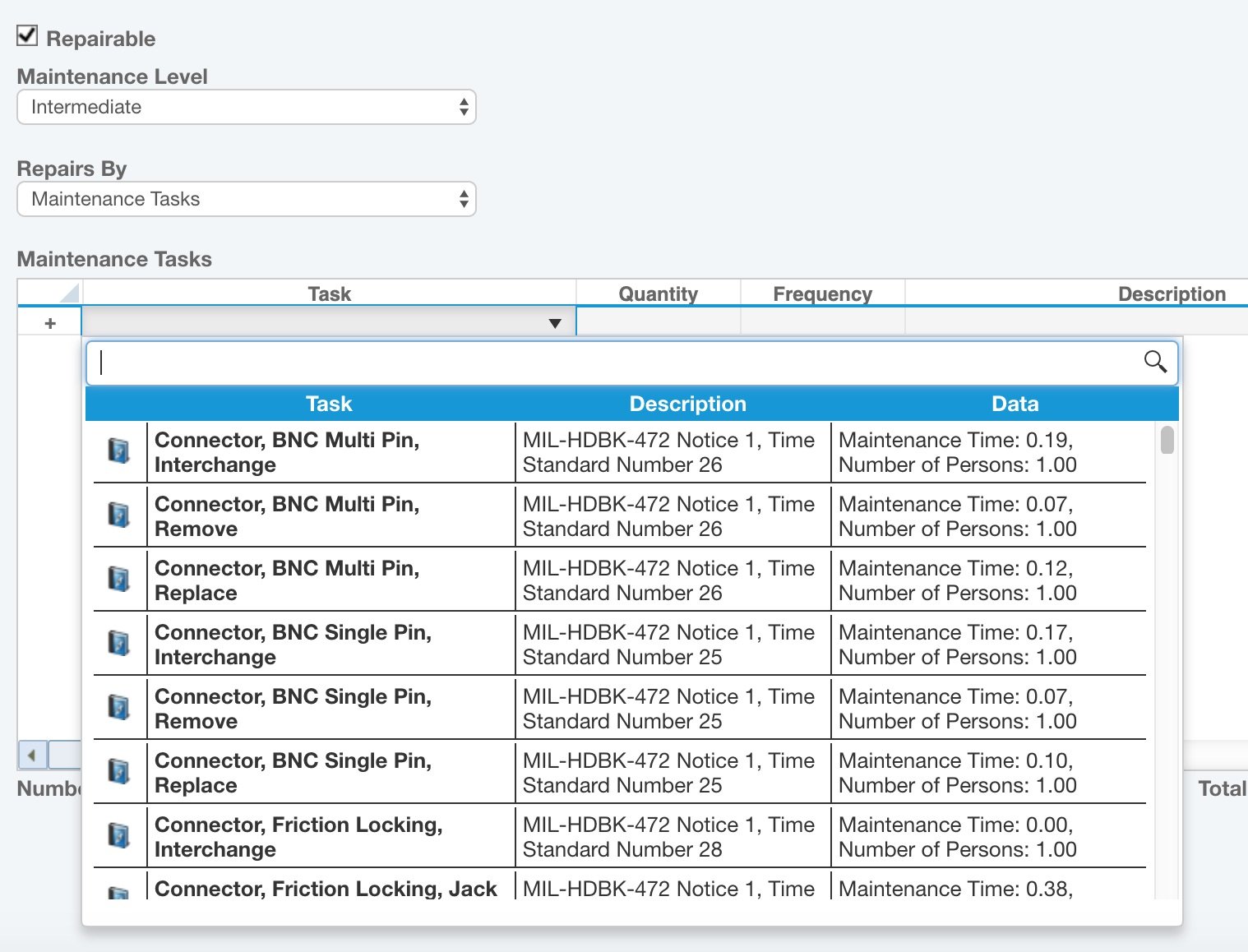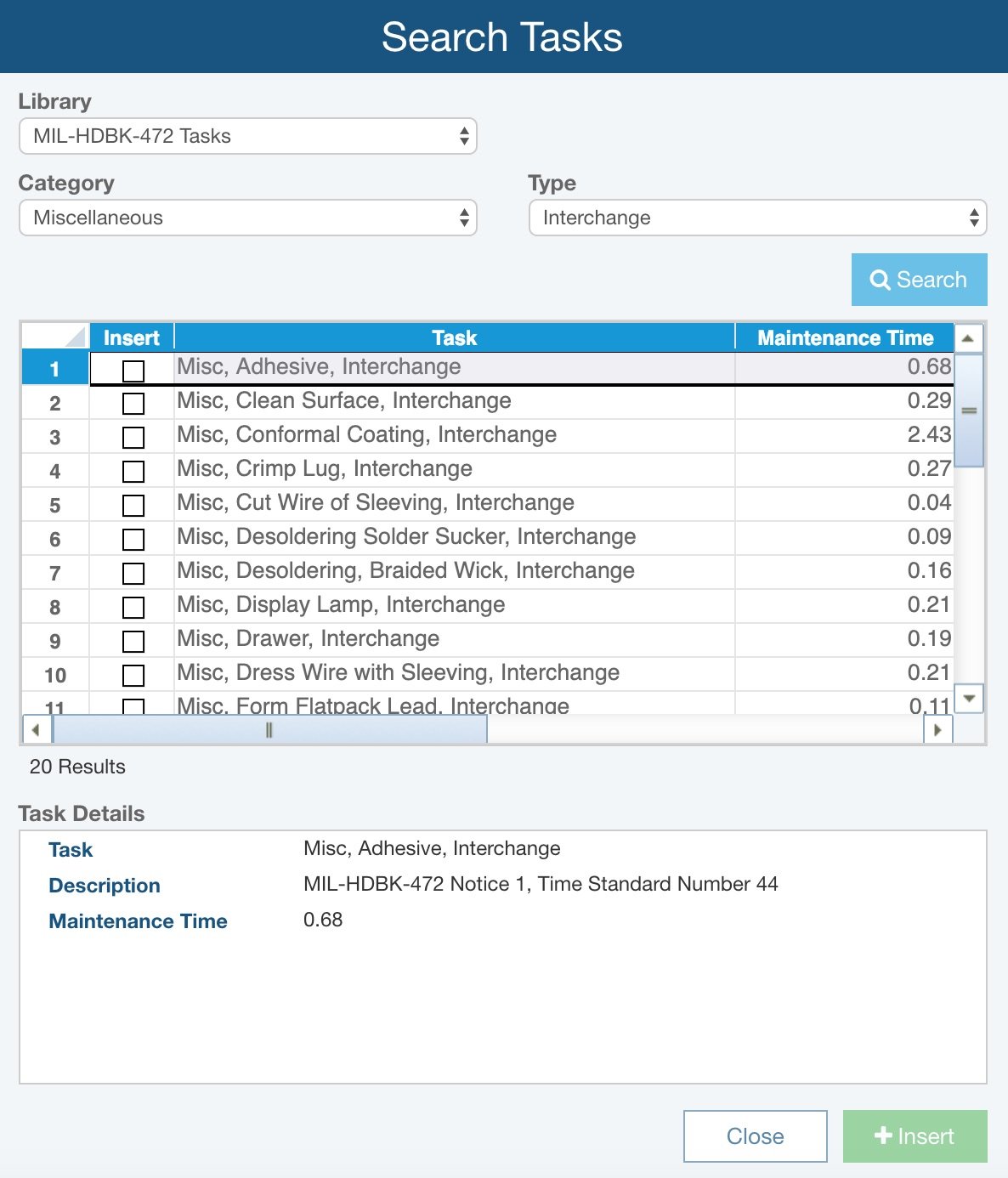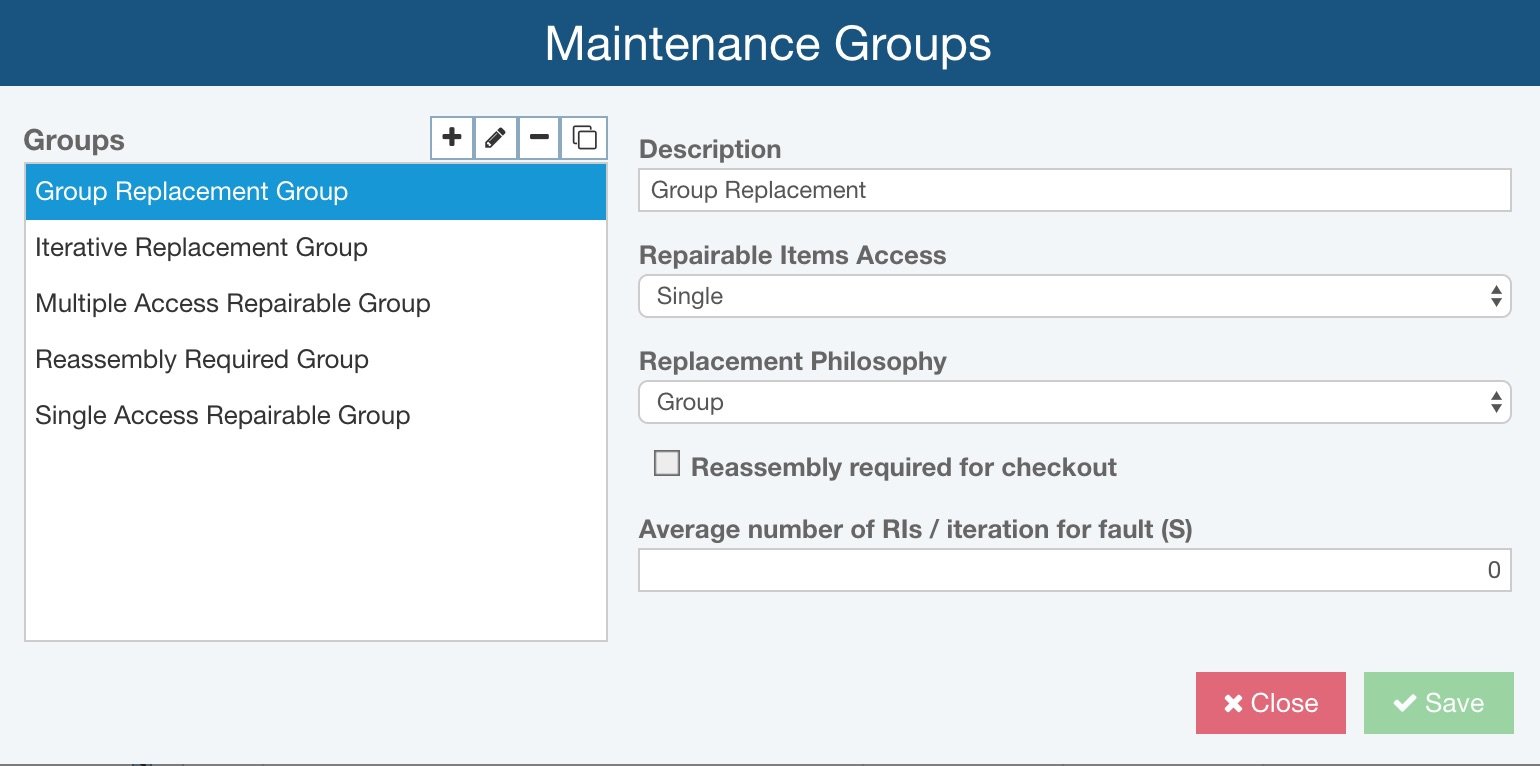MIL-HDBK-472
Relyence Maintainability Prediction is built on the accepted practices and procedures defined in MIL-HDBK-472, and includes all the building blocks used to perform an analysis: Tasks, Task Groups, FD&I (Fault Isolation & Detection) Outputs, and Maintenance Groups. For maximum efficiency, Relyence Maintainability Prediction has built-in support for the MIL-HDBK-472 Task Library and enables you to create your own libraries of maintenance data. Plus, the handy Search Tasks feature provides quick and easy retrieval of your maintenance library data.
Tasks
At their core, Maintainability Prediction analyses are based on defining your maintenance and repair activities as a series of Tasks, or elemental, basic actions that are taken in response to a maintenance activity, whether as a corrective action or a preventive action. Tasks can be as low level as you prefer. The lower the level of detail, the more precise your repair activity list can be, and the more accurate your repair metrics. Task information includes data such as the maintenance type (corrective or preventive), the time, the number of people, and the MTTR element (the part of the repair this task applies to, such as Disassembly or Reassembly).
Task Groups
Once you have a set of defined basic Tasks, you can combine Tasks into a set, or a Task Group. A Task Group is a series of Tasks completed together in order to perform a repair or maintenance action. Task Groups can then be used to define a maintenance activity in a single step. You can define any number of Task Groups, which will automatically retrieve the underlying Task data when performing the Maintainability Prediction analysis.
FD&I Outputs
In Relyence Maintainability Prediction, you can define your maintenance actions based on Tasks or FD&I (Fault Detection and Isolation) Outputs. Fault Detection and Isolation (FD&I) Outputs are the indications that identify to repair personnel the procedures to follow in the case of a failure. Common types of FD&I Outputs include BIT (built-in test) outputs, alarms, meter indicators, or any type of system alert. You can create a library of all your FD&I Outputs for use in your Relyence Maintainability Prediction analyses.
Maintenance Groups
When using MIL-HDBK-472 Procedure 5 based analyses, your Maintenance Groups are used when performing calculations. Maintenance Groups define how a repair action is performed on a group of replaceable items. In Relyence Maintainability Prediction, you can define your Maintenance Groups and their associated parameters: repairable item access, replacement group philosophy, and if reassembly is required for checkout.
MIL-HDBK-472 Task Library
Relyence Maintainability Prediction has the task data found in MIL-HDBK-472 built-in for you. This means that you can automatically search and retrieve the commonly used task information provided in the MIL-HDBK-472 standard. You can use these Tasks as building blocks when defining your Task Groups and FD&I Outputs as well.
Task and Task Group Libraries
You can supplement the supplied MIL-HDBK-472 Tasks with your own Tasks. You can build up a complete library of your own known repair task information for reusability and consistency. You can define basic Tasks – simple, elemental actions – along with their parameters, such as maintenance type and time. You can then combine those Tasks into a series of steps – or a Task Group. Your Relyence Maintainability Prediction library can include both Tasks and Tasks Groups.
Search Tasks
As your Tasks libraries grow over time, the ability to find the specific Tasks you are looking for may become more difficult. Relyence Maintainability Prediction includes a useful Search Tasks capability to help in quickly locating specific Tasks and retrieving the data automatically. From any Task Table, click the Search icon to activate the Search Tasks function. You can filter results as needed, locate matching items, and insert one or more repair Tasks quickly and easily.
Using Maintainability Prediction Libraries
The building blocks of maintainability prediction analyses are are Tasks, Task Groups, FD&I Outputs, and Maintenance Groups. Depending on the complexity and level or detail of your analysis needs, you may use just one or a combination of these elements.
Relyence Maintainability Prediction enables you to create libraries for each of these building blocks for consistency and reusability. By using Relyence Maintainability Prediction libraries, you will have the data needed to define your maintenance activities across your company in a consistent and organized way. You can continually update and enhance your libraries as your processes evolve to keep your analyses up-to-date and accurate.

